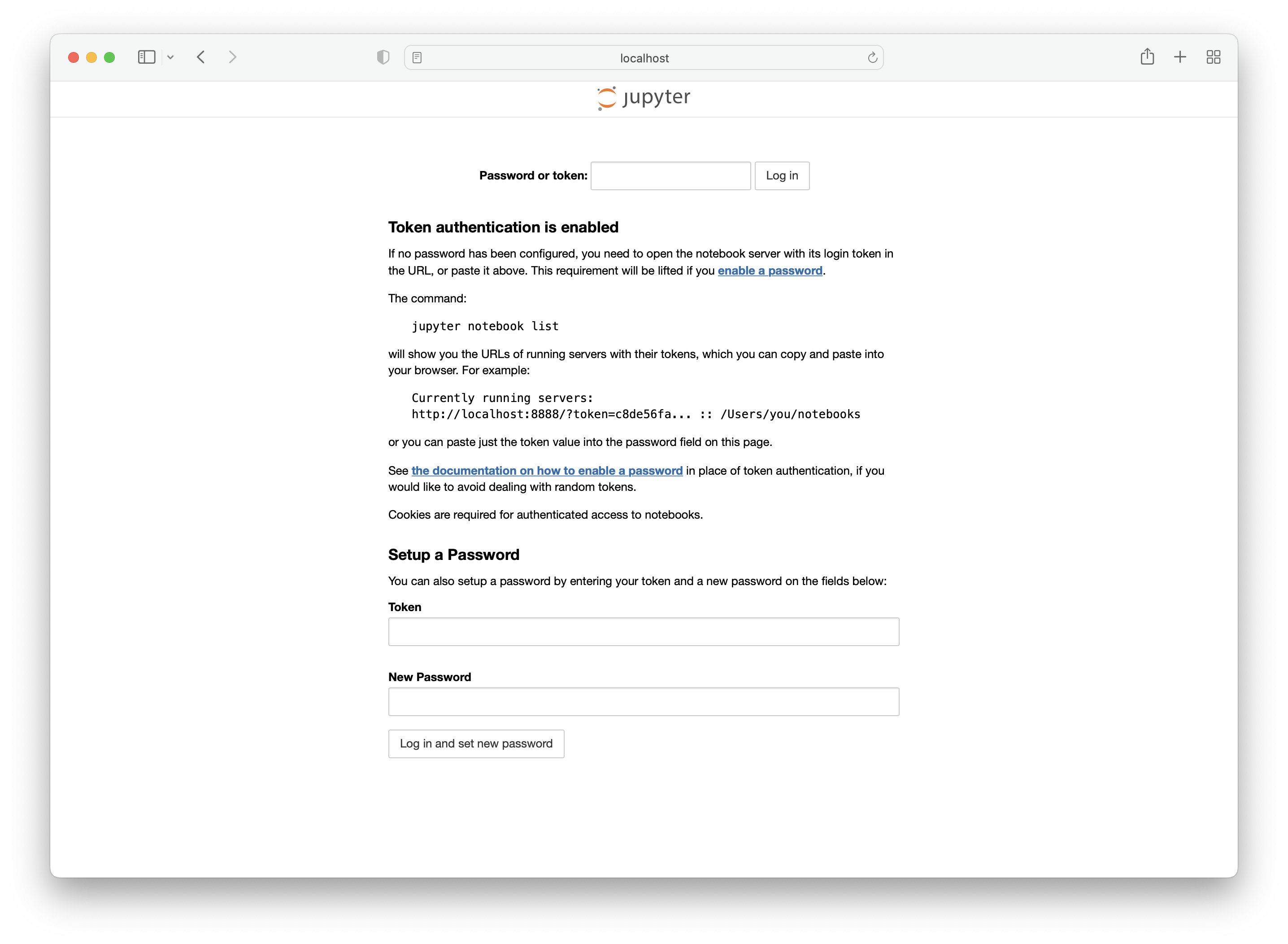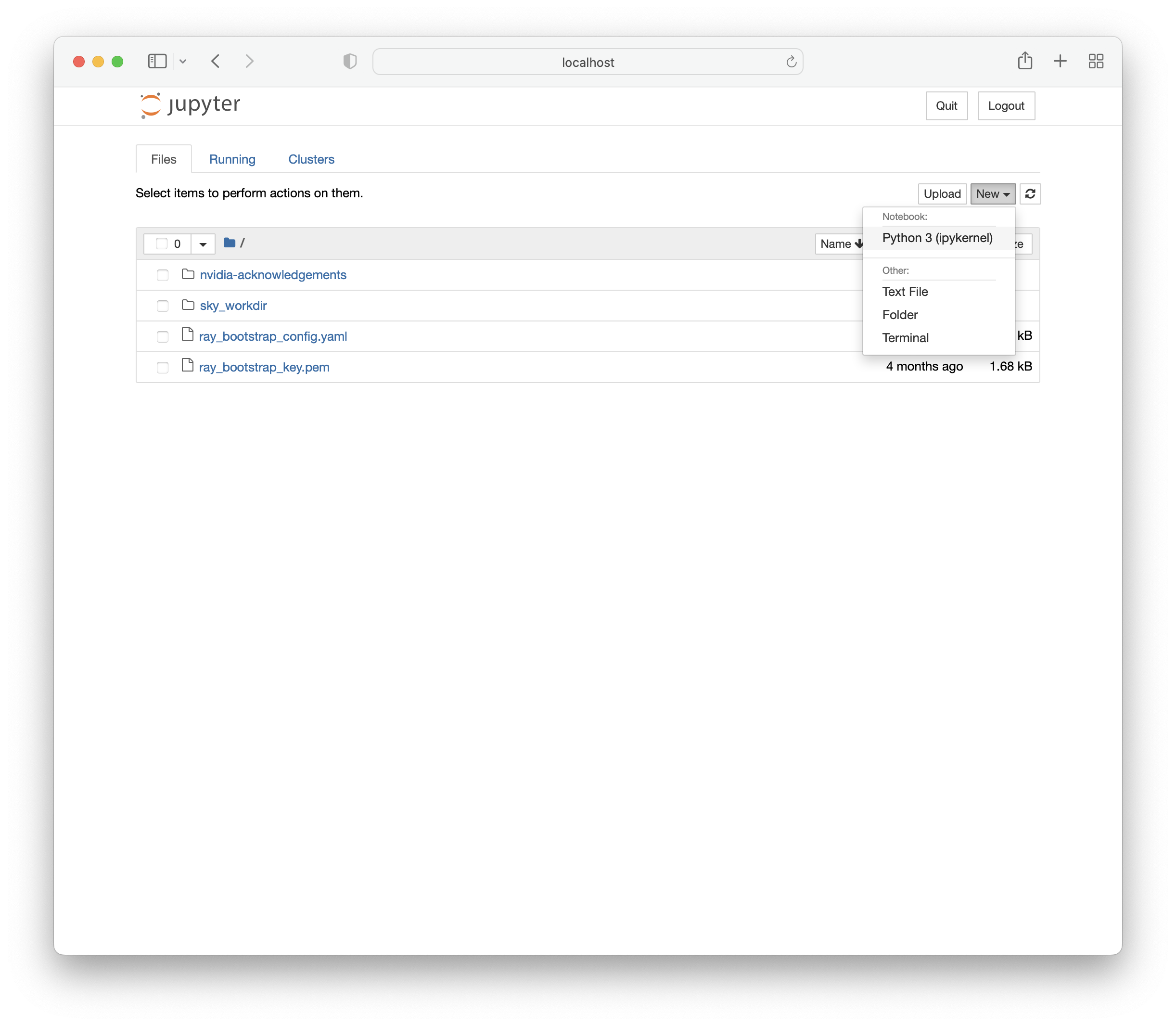GPU-backed Jupyter Notebooks#
Jupyter notebooks are a useful tool for interactive development, debugging, and visualization. SkyPilot makes the process of running a GPU-backed Jupyter notebook simple by automatically managing provisioning and port forwarding.
To get a machine with a GPU attached, use:
# Launch a VM with 1 NVIDIA GPU and forward port 8888 to localhost
sky launch -c jupyter-vm --gpus K80:1
ssh -L 8888:localhost:8888 jupyter-vm
Note
View the supported GPUs with the sky show-gpus command.
Use ssh jupyter-vm to SSH into the VM. Inside the VM, you can run the
following commands to start a Jupyter session:
pip install jupyter
jupyter notebook
In your local browser, you should now be able to access localhost:8888 and see the following screen:

Enter the password or token and you will be directed to a page where you can create a new notebook.

You can verify that this notebook is running on the GPU-backed instance using nvidia-smi.

The GPU node is a normal SkyPilot cluster, so you can use the usual CLI commands on it. For example, run sky down/stop to terminate or stop it, and sky exec to execute a task.
Notebooks in SkyPilot tasks#
Jupyter notebooks can also be used in SkyPilot tasks, allowing access to the full range of SkyPilot’s features including mounted storage and autostop.
The following jupyter.yaml is an example of a task specification that can launch notebooks with SkyPilot.
# jupyter.yaml
name: jupyter
resources:
accelerators: K80:1
file_mounts:
/covid:
source: s3://fah-public-data-covid19-cryptic-pockets
mode: MOUNT
setup: |
pip install --upgrade pip
conda init bash
conda create -n jupyter python=3.9 -y
conda activate jupyter
pip install jupyter
run: |
cd ~/sky_workdir
conda activate jupyter
jupyter notebook --port 8888
Launch the GPU-backed Jupyter notebook:
sky launch -c jupyter jupyter.yaml
To access the notebook locally, use SSH port forwarding.
ssh -L 8888:localhost:8888 jupyter
You can verify that this notebook has access to the mounted storage bucket.
